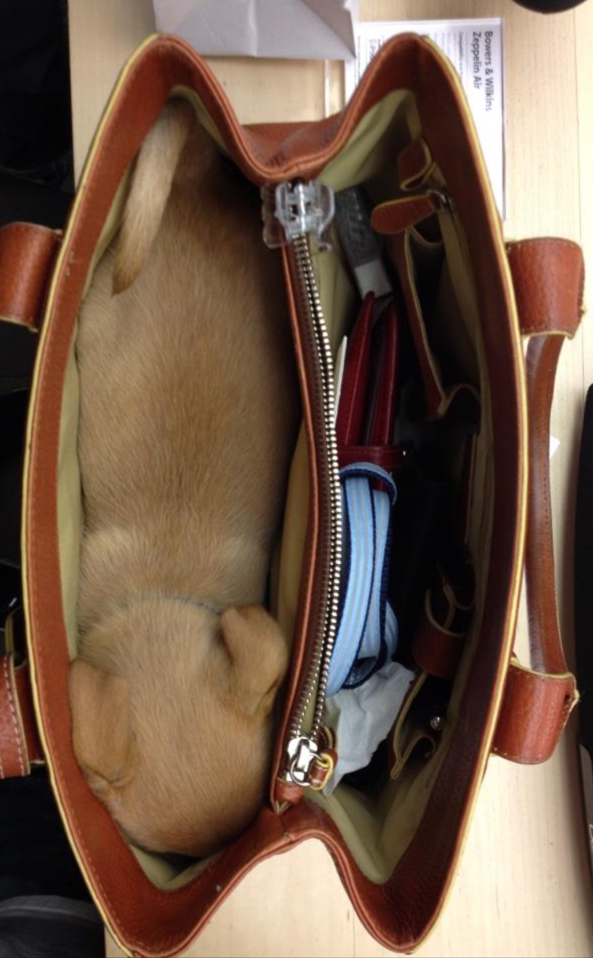
I never thought I would be a small dog person, but I have been officially converted. About ten years ago we picked up a puppy that was the result of an unplanned pregnancy. Her father was a Jack Russell and mother was a Maltese.She was the only puppy in the litter with short hair.
We named her Tyson, partly because we brought her home in a Tyson chicken box and partly because she wasted no time in biting my son’s ear — drawing blood. This dog is remarkable, incredibly soft and affectionate while supremely adventurous and athletic. In her prime she was, pound for pound, the fastest dog I have ever seen. People regularly stop and watch in amazement when she fetches a ball in the park. She climbs vertical rock faces, jumps off docks at full speed to fetch a stick, and chases waves on the beach for hours. I have never had a dog that was so amazing. The best thing is her compact frame. We call her a pocket dog because she can be tucked into a sweatshirt or bag and accompany us virtually anywhere. She exhibits remarkable control of her bowels, and when the need arises the result is small and manageable. Her appetite matches her output, and she rarely begs for food. She almost always rejects doggie treats offered by strangers but suprisingly loves carrots and other vegetables. When she passes I doubt she can ever be replaced. It seems supremely unfair to get another dog that would undoubtedly be compared to Tyson. She has become a part of our lives in ways I never imagined.
The term biophillia is commonly thrown about today and refers to our innate human need to connect with nature and other living things. Connecting with the natural environment, other people and animals is linked to improved cognitive function as well as physical and mental health. It is no wonder that more than 70% of households in the United States have a pet and we collectively spent more that $100 billion caring for them last year. If these creatures are such an important part of our lives, how are they accommodated in the spaces we fashion? A fellow architect told me a story about a wealthy client that had him design a glass elevator in his home because his aging dog was unable to use the stairs and did not like to be confined in small spaces. Several months and a half a million dollars later, the dog elevator was completed and promptly rejected by his beloved pet. Granted, this particular story is extreme and perhaps absurd; however, we rarely consider how our pets experience the spaces we occupy. As these animals become more integrated into our lives and well-being, it may be wise to consider and perhaps accommodate their unique needs and tendencies. Their well-being and comfort could very well be linked to our own.
